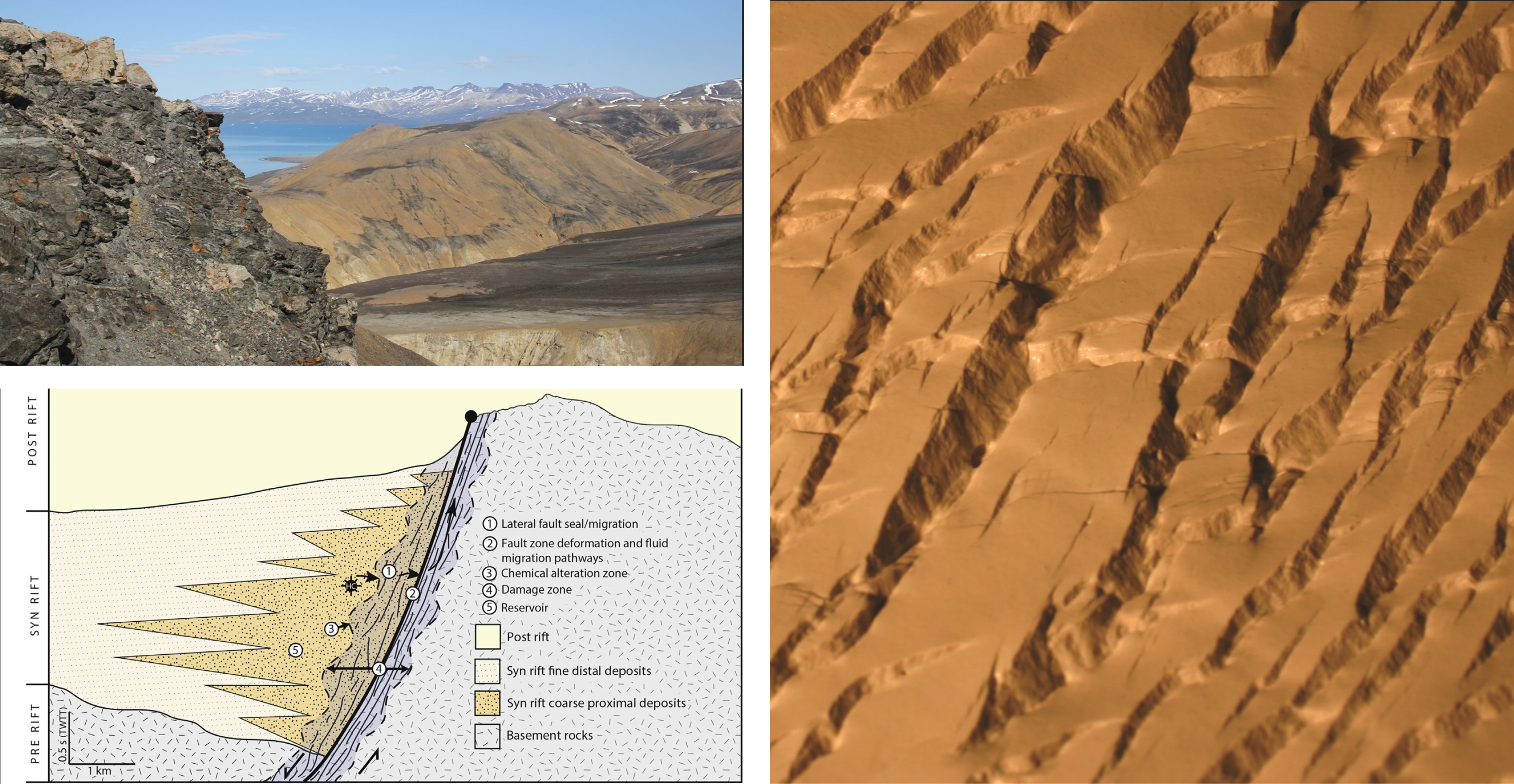Webinar: Structural Group afternoon fault lectures

The Structural Geology Network Group invites you to the first lunch & learn after the summer. Alissa Henza and Thomas Berg Kristensen from Equinor will be presenting a series on fault lectures. Don't miss out on this great event.
| Date | Time | Duration | Register by | Location |
| 17.08.2022 | 15-16:10 | 70 Min | 17.08.2022 | Teams |
- Thomas Berg Kristensen, Equinor: ‘’Characterisation of late Jurassic border faults – Insights from outcrop studies, NE Greenland’’
Summary: The conjugate margin of NE Greenland provides a natural laboratory for outcrop insights to what we work with daily in the subsurface of the NCS, with age equivalent rocks and a comparable structural setting. In this presentation we will give an overview of observations and results produced from two field-campaigns to Wollaston Forland, NE Greenland, during 2014 and 2018 as well as a taste of ongoing and future work. With a structural template stemming from the Caledonian orogeny we jump from the scale of the entire East Greenland rift system and focus in on the basin bounding Dombjerg fault, which separates a basement footwall from syn-rift clastics in its hanging-wall. The Dombjerg fault provides insights into timing of fault activity and fault related cementation and can be a valuable analogue with regards to fault seal and N/G estimation around syn-rift faults.
Link to a blog from the fieldwork
- Alissa Henza, Equinor: Structural Inheritance in Rift Basins: Understanding Complex Fault Geometries and Interactions through Physical Modeling
Summary: We use scaled physical (analogue) models with wet clay to investigate how the properties of a population of pre-existing normal faults influence fault development during a subsequent phase of non-coaxial extension. The orientation of pre-existing normal faults significantly influences (1) the likelihood of fault reactivation, (2) the magnitude and sense of slip of the reactivated faults, and (3) the orientation, number, and length of the new normal faults. In addition, the magnitude of first-phase extension strongly influences the fault geometries that develop during the second phase of extension and the interactions between the pre-existing faults and new faults. Documenting how these fault patterns develop and the controls on deformational patterns is crucial for understanding fluid flow in the subsurface for both hydrocarbon exploration and production and for carbon capture and sequestration (CCUS).
How a webinar works
You register as usual through the registration button above. Once you are registered you will get an invitation via email to join this webinar.
FORCE uses Teams Video for this webinar, and has proven to work successfully.
We recomment that everyone joining turn off their camera and microphone when joining.
If you have any questions you can use the chat or wait until the end of the talk.
We encourage you to sign up as soon as you know you will attend, as FORCE seminars many times are sold out.
Once you have registered, you will receive an Outlook invitation with the Teams link, a few days prior to the webinar.
Please note, you cannot forward the link to anyone who is not registered.
Participation fees
FORCE members: free
Non-members: NOK 350,-
University/student: free
Important information
you can register as a FORCE member an pay "FORCE member" price if you are an employee of a member company.
All FORCE member companies are listed here.
Payment is made online by credit card. Please note that no refunds will be given after you have signed up. If you for any reason cannot attend the event, you are welcome to send a representative, just inform Linn Smerud as soon as there are changes.
Welcome!
Updated: 8/18/2022
